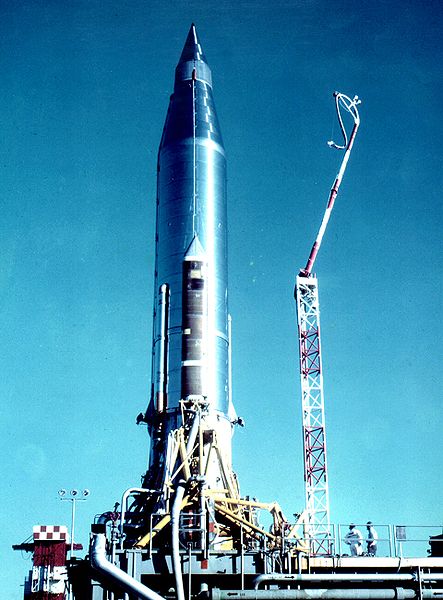The Communication Moon Relay project was a telecommunication project carried out by the United States Navy. Its objective was to develop a secure and reliable method of wireless communication by using the Moon as a natural communications satellite — a technique known as Earth–Moon–Earth communication (EME). Most of the project's work took place during the 1950s at the United States Naval Research Laboratory. Operation Moon Relay was spun off from a classified military espionage program known as Passive Moon Relay (PAMOR), which sought to eavesdrop on Soviet military radar signals reflected from the Moon.
Sailors on board the USS Hancock (CV-19) spelling out "Moon Relay." This picture was transmitted via Moon bounce as part of the official Navy inauguration of the system.
An entry in Trexler's notebook regarding Moon bounce communications.
A communications satellite is an artificial satellite that relays and amplifies radio telecommunication signals via a transponder; it creates a communication channel between a source transmitter and a receiver at different locations on Earth. Communications satellites are used for television, telephone, radio, internet, and military applications. Many communications satellites are in geostationary orbit 22,236 miles (35,785 km) above the equator, so that the satellite appears stationary at the same point in the sky; therefore the satellite dish antennas of ground stations can be aimed permanently at that spot and do not have to move to track the satellite. Others form satellite constellations in low Earth orbit, where antennas on the ground have to follow the position of the satellites and switch between satellites frequently.
Replica of an Iridium satellite
Replica of Sputnik 1
The Atlas-B with SCORE on the launch pad; the rocket (without booster engines) constituted the satellite.
An Iridium satellite






